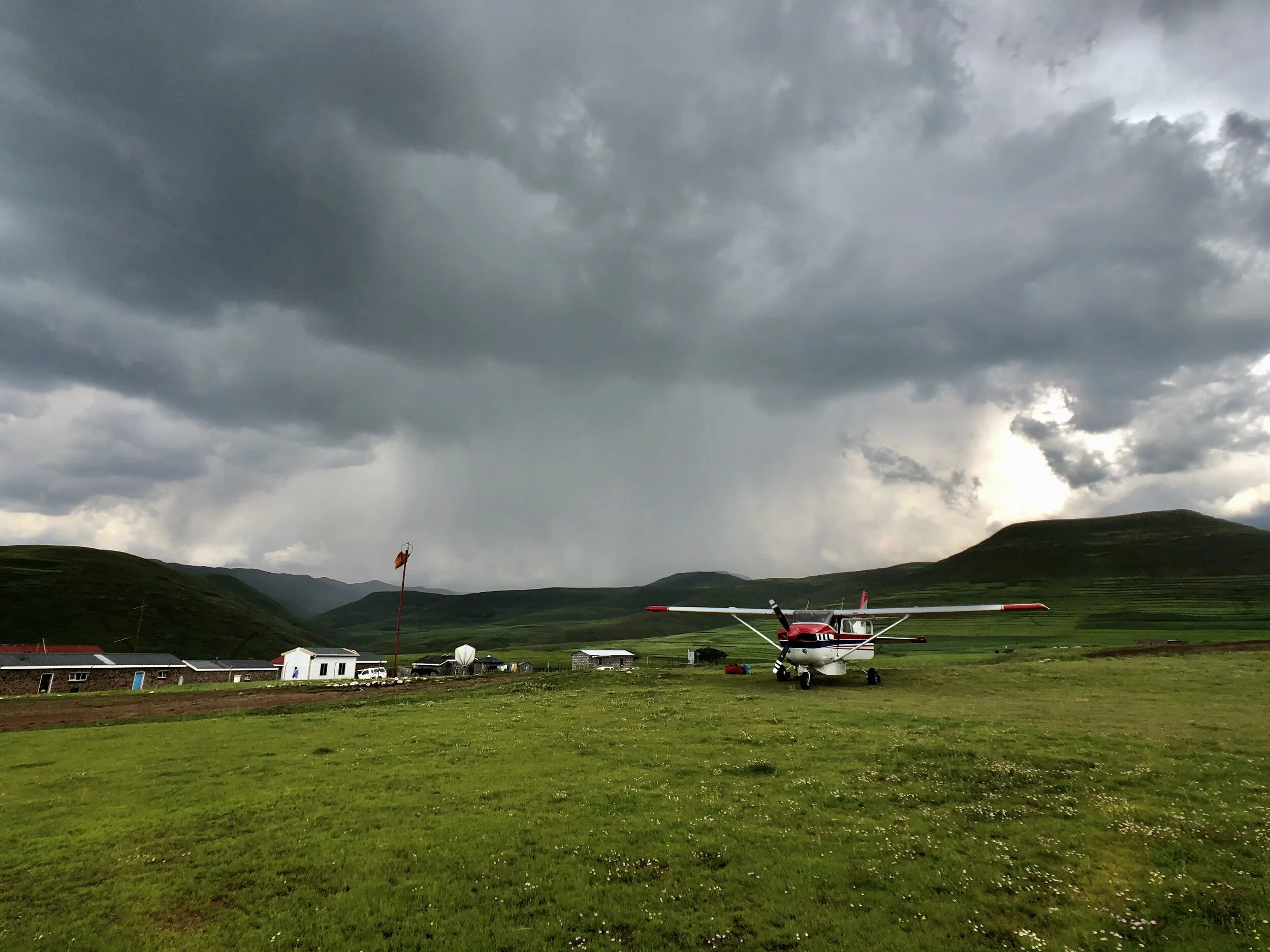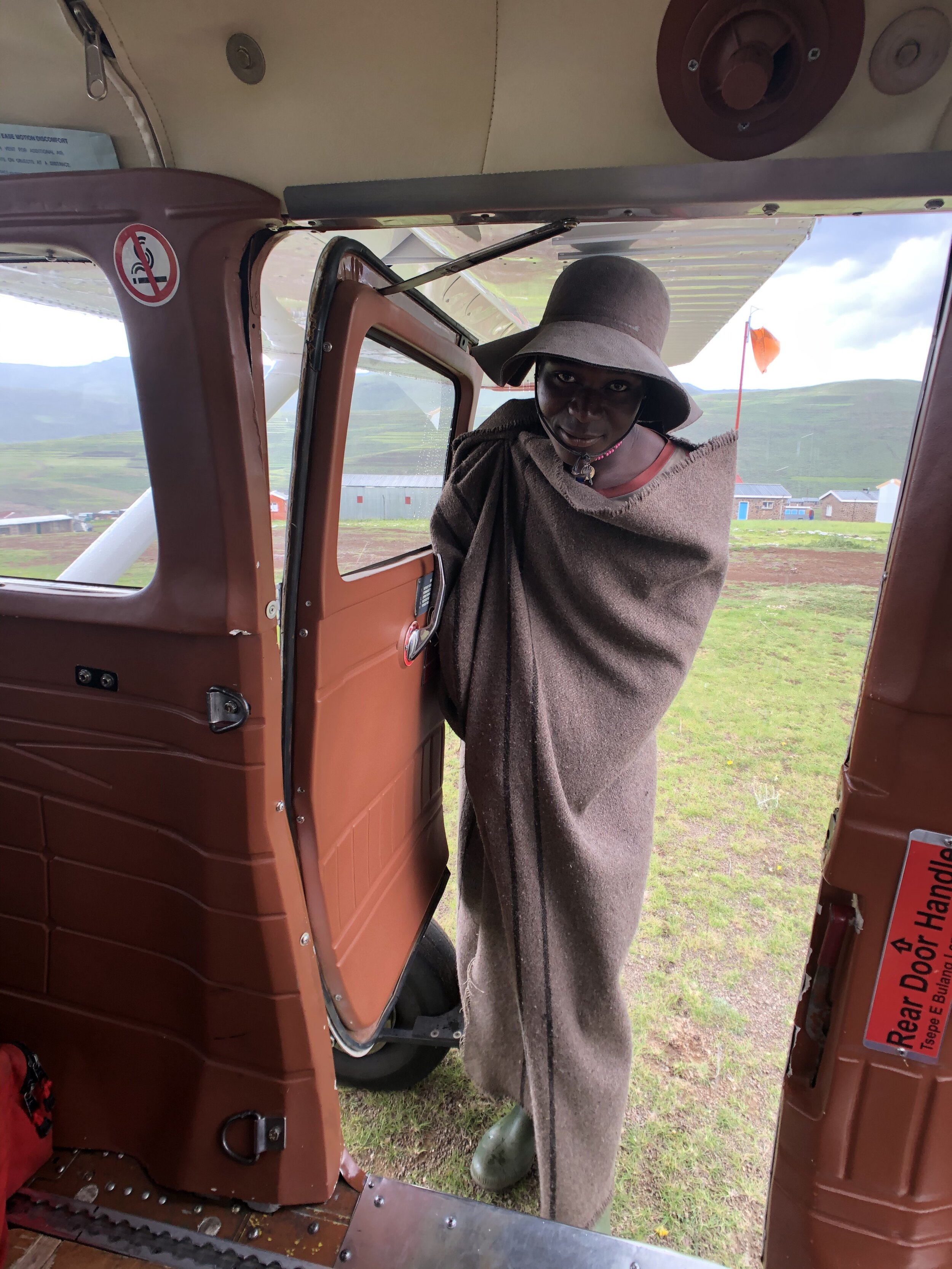In early February I was scheduled to go to the USA for training for my new role as the MAF Lesotho Director of Safety.
The last flight I had on the Friday before leaving turned out to be an unexpectedly challenging one.
I had 2 flights that day. The morning one was pretty straight forward, weather was good, and everything went as planned. My second flight was more challenging.
It’s interesting how we perceive things, compared to how they turn out. I was scheduled to take a casket and body, along with a family member of the deceased to one of our most challenging airstrips. After that, I was scheduled for a second stop to take a mother and her special needs child back to their village. Her name is Buang, and its hard to judge her age. She relies on her mom to move around, as she is not able to use her arms or legs. We often fly Buang and her mom as she comes regularly to Maseru for check-ups. She is small enough to still sit on her mom's lap in the plane, but old enough to reply to the pilot with a little sass. So my guess is she must be older than 10.
I was not at all worried about the second stop as it's typically not too hard to get into. I would soon see that the ‘easy’ airstrip would be where things got interesting on that day.
The first stop, Methalaneng, is hard because of the prevailing wind, and the option to only land in one direction. As such, we usually try and get it done first thing in the morning, before the wind picks up. On this day, however, due to complications with getting the casket delivered to the airport, I was trying the flight around lunch time. I predicted a 50% chance that I would be able to land there. If not, I would have to drop them at a village about a 2 hour road drive away.
I arrived overhead for landing, and the wind looked about on the limit for what we can accept. I set up, and with everything below the threshold of what I considered safe and managable, I was able to safely land.
The villagers waiting for the casket
I was very happy I made it in, because as we unloaded, about 30 villagers who had gathered to welcome the deceased back home started singing beautifully and mournfully. It was a wonderful expression of mourning and respect.
I got going again pretty quickly, to make sure I had plenty of time for my next stop and get home again.
My next stop was the airstrip we go the most often. It falls about halfway down the list in terms of difficulty, and because we go there so often, it’s easy to get relaxed about it.
Oh, I forgot to mention: Buang cries and screams from take-off until landing. She hates flying and isn’t shy to express that! So, I was looking forward to letting her get off!
Just before the storm
About 5 minutes away from Buang's village, I noticed that the storm I had been seeing in the distance was actually pretty close to the airstrip. Just a little past it, maybe a mile or so. I was happy to be there when I was, as it looked like I would be able to land before it came in. My options were to do that, or to land somewhere else and wait an hour for the storm to pass. I figured I would try get in, and if there was too much rain, I would get out and go land elsewhere.
Approaching the airstrip, there was some rain, but I had no problem seeing through it. All the while, Buang was still screaming.
Taking shelter under the wing!
Just after landing and offloading, the storm hit! The wind picked up, and within a few minutes it was raining heavily. A few shepherds hid under my wing to take shelter. After about 20 minutes of rain and hail, it finally let up!
I was able to get home safely after that, happy to have been able to help, and reminded to never consider the ‘easy’ places free of threats.
It’s easy to see pressure get stacked onto a pilot: Last flight before leaving for the USA, a crying girl on board, a corpse on-board in a hot, tiny airplane. There were many reasons to push me towards going, and taking risks. Thankfully this day, those risks were all within the limits. I also got to spend the next two weeks in a safety course, thinking about these things and learning how to lead our pilots here in Lesotho to be aware and to manage risk.



